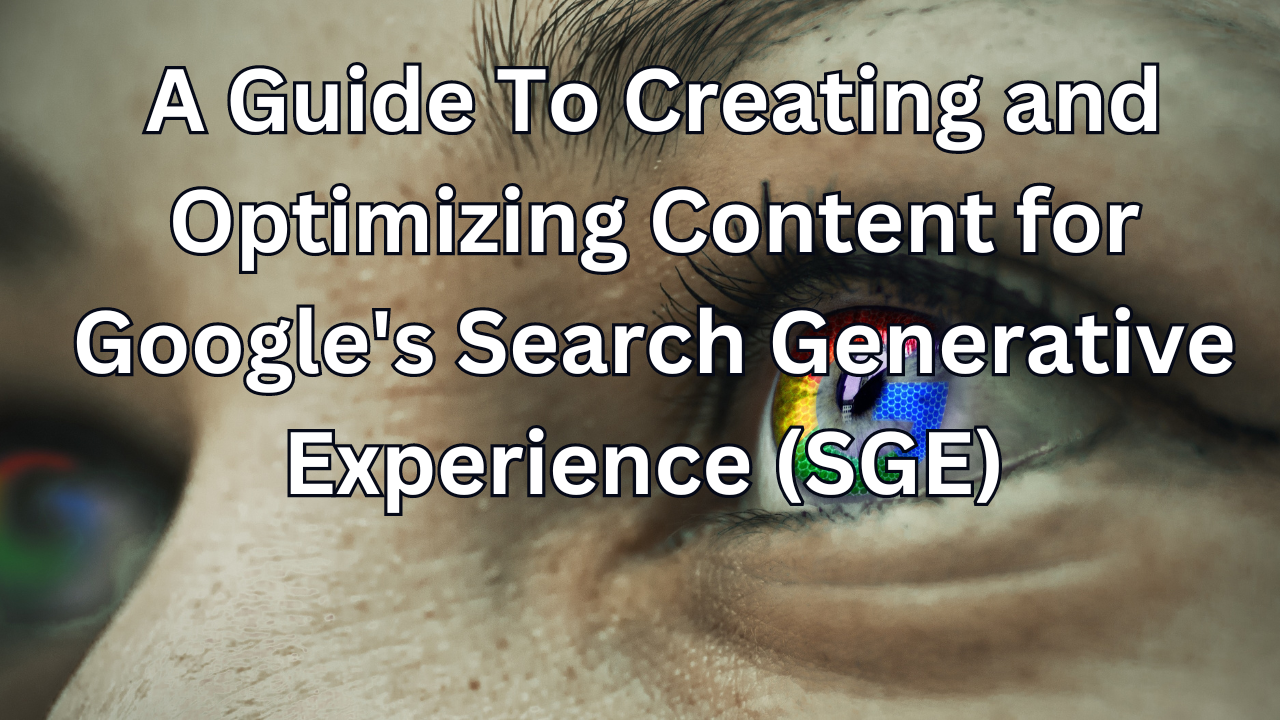The launch of Google’s Search Generative Experience (SGE) has significant implications for content creators and website owners. This AI-powered search feature presents users with automatically generated snippets, summaries, and visual content at the top of results pages. To fully capitalize on SGE, you need to optimize your existing content and embrace creating useful authoritative content. This guide covers everything you need to know, from focusing on quality to diversifying beyond Google.
What is Google’s Search Generative Experience (SGE)?
- SGE is a new Google search feature powered by artificial intelligence.
- It provides users with summarized information at the top of search results, generated from multiple websites.
- The AI-generated content is concise, contextual, and conversational.
- SGE allows users to have a dialogue with the search engine through follow-up questions.
Best Practices for Optimizing Content for SGE:
Focus on Creating High-Quality, Useful Content
- SGE relies on aggregating existing human-created content, so authoritative content will be prioritized.
- Ensure information is accurate, in-depth, and adds value for users.
- Include keywords naturally and focus on long-form content.
Optimize for Visual Elements
- SGE prominently features images, videos, and visuals in results.
- Use original, high-quality images, infographics, and videos.
- Optimize media files for web and mobile.
- Implement proper image SEO with alt text and metadata.
Use Conversational, Natural Language
- Write content in a conversational tone using natural phrasing.
- Format content using headings, lists, and short paragraphs for easy skimming.
- Answer potential user questions and include long-tail keywords.
Implement Structured Data and Schema Markup
- Use schema.org structured data to help SGE understand page content.
- Optimize product schema, FAQ schema, video schema etc.
- This helps featured snippets, key point extraction and visual elements.
Provide Useful, Factual Summaries
- Include summaries, key takeaways, and bullet points to present information clearly.
- Summarize key benefits of products/services for potential SGE feature.
- Avoid fluff, exaggerations, and unsubstantiated claims. Stick to facts.
Monitor and Analyze SGE Features
- Check search results frequently for SGE features related to your content.
- See if there are opportunities for better optimization and improvement.
- Leverage Google’s feedback options.
Diversify Beyond Google Search
- Don’t rely solely on Google traffic. Explore other platforms too.
- Consider email marketing, social media, PR, PPC etc. to mitigate risks.
By focusing on content quality, and relevance and optimizing for SGE’s AI capabilities, you can ensure your website benefits from this new Google search feature. But always diversify channels to build a stable online presence.
 How to Create Authoritative, Useful Content
How to Create Authoritative, Useful Content
- Conduct extensive research from reputable sources. Verify facts.
- Interview industry experts to provide unique insights.
- Create comprehensive, in-depth guides on topics. Include actionable advice.
- Write from experience and expertise. Establish credibility.
- Explain complex ideas clearly. Simplify concepts for easy understanding.
- Use data, statistics, and case studies to support key points.
- Address user intent and pain points. Focus on being helpful.
- Include multimedia like infographics, images, videos and screenshots to engage readers.
- Publish advanced, up-to-date information. Check for outdated details.
- Proofread carefully. Check grammar, spelling, formatting.
- Promote content on social media, outreach and PR to build authority.
How to Update Existing Content
- Review old content critically. Identify areas for improvement.
- Check if the information is still accurate and up-to-date. Update outdated details.
- Look for gaps that need more explanation. Expand on concepts.
- Improve formatting for scannability. Use headings, lists, and highlights.
- Shorten sentences and paragraphs for easier reading. Tighten wording.
- Increase depth by adding new sections, data, expert opinions, case studies, etc.
- Make the tone more conversational and natural.
- Include more multimedia elements – new engaging videos, images, gifs, etc.
- Refresh design and layout. Update navigation and internal linking.
- Promote refreshed content. Repurpose it for other formats like video, and podcast.
- Monitor performance. See if updates helped improve page metrics.
 FAQs:
FAQs:
How does SGE affect rankings?
SGE prioritizes relevance over keywords. If your content provides factual, in-depth value, it has a better chance of appearing prominently. But quality content creation remains crucial.
Should I use more conversational language?
Yes, SGE aims to have a dialogue with the user, so optimize content with natural, conversational wording, similar to how you would explain something to a friend.
Are traditional metadata and SEO still relevant?
Yes, foundational technical SEO cannot be ignored. Optimize title tags, meta descriptions, alt text, site speed, etc. to complement your content efforts.
What multimedia helps the most?
Original, high-quality images, infographics and videos integrated seamlessly into your content can improve engagement and visibility with SGE.
How much-existing content needs updating?
Audit old content critically, and update anything outdated, low-quality or not useful. Then focus on creating new optimized content.
Conclusion:
With SGE, Google has underscored the importance of useful, factual content. This guide outlines the key steps website owners can take to optimize for SGE – from writing conversational, scannable content to diversifying online presences. By staying updated and adapting to these AI capabilities, you can ensure your website benefits from SGE’s innovations.




